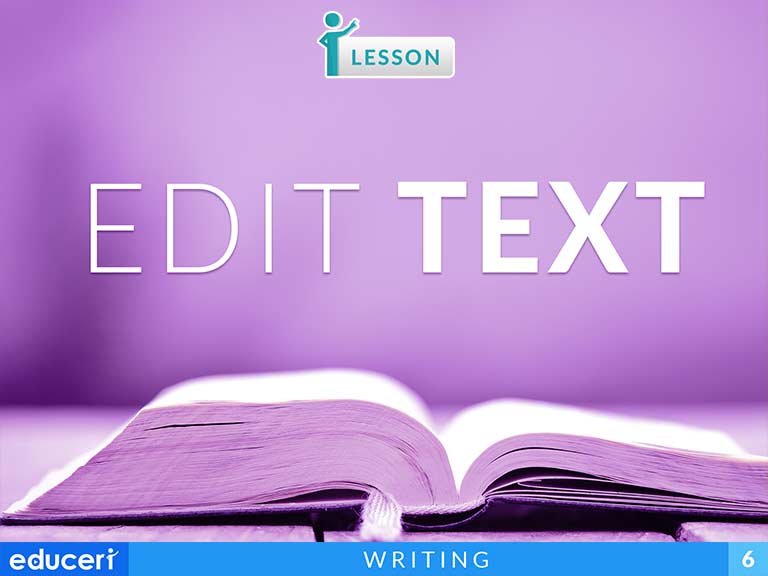All Lessons

Recognize Descriptive Phrases
This writing lesson covers how to recognize descriptive details, such as adjectives, adverbs, and prepositional phrases. The lesson includes research-based strategies and strategic questions that prepare students for assessments. In this lesson, students will identify the descriptive phrase, then identify which word the phrase describes. Finally, they will determine what the descriptive phrase gives more details about. Also, passages of descriptive text are provided with questions about the descriptive phrases.
Share This Lesson

Use Descriptive Phrases
This writing lesson covers how to use descriptive phrases, such as adjectives, adverbs, and prepositional phrases to be more precise. The lesson includes research-based strategies and strategic questions that prepare students for assessments. In this lesson, students are given a basic sentence along with instructions for adding a type of feeling, color, motion, shape, etc. Students select the most precise descriptive phrase and rewrite the sentence with the new phrase.
Share This Lesson

Plan and Write a Narrative
This writing lesson requires students to write a previously planned narrative. The lesson includes research-based strategies and strategic questions that prepare students for assessments. In this lesson, Students take their notes from the previous lesson and write a first draft of their narrative and edit their composition.
Share This Lesson
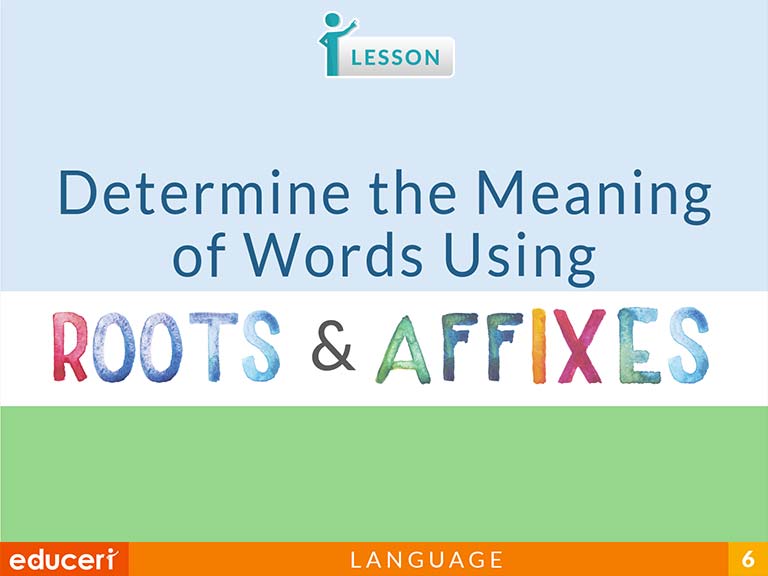
Determine the Meaning of Words Using Roots & Affixes
This language/vocabulary lesson covers how to determine the meaning of words using roots and affixes. The lesson includes research-based strategies and strategic questions that prepare students for assessments. In this lesson, students will learn how to analyze words in a sentence based on given root definitions.
Share This Lesson
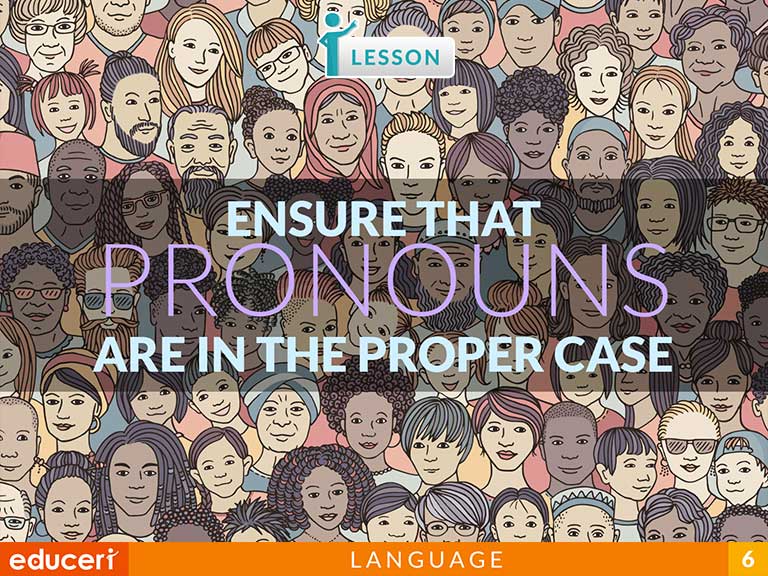
Ensure That Pronouns Are in the Proper Case
This language lesson covers the use of pronouns in the proper case. The lesson includes research-based strategies and strategic questions that prepare students for assessments. In this lesson, students will learn when to use subjective, objective, and possessive case forms of pronouns.
Share This Lesson

Determine the Meaning of Unknown Words Using Context Clues
L.6.4 Determine or clarify the meaning of unknown and multiple-meaning words and phrases based on grade 6 reading and content, choosing flexibly from a range of strategies.
L.6.4.AL.6.4.A Use context (e.g., the overall meaning of a sentence or paragraph; a word's position or function in a sentence) as a clue to the meaning of a word or phrase.
Share This Lesson
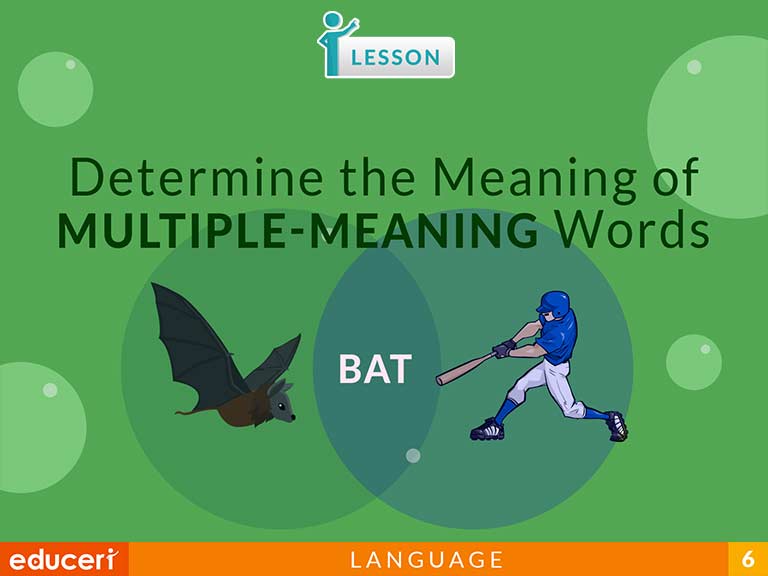
Determine the Meaning of Multiple-Meaning Words
L.6.4 Determine or clarify the meaning of unknown and multiple-meaning words and phrases based on grade 6 reading and content, choosing flexibly from a range of strategies.
L.6.4.AL.6.4.A Use context (e.g., the overall meaning of a sentence or paragraph; a word's position or function in a sentence) as a clue to the meaning of a word or phrase.
Share This Lesson
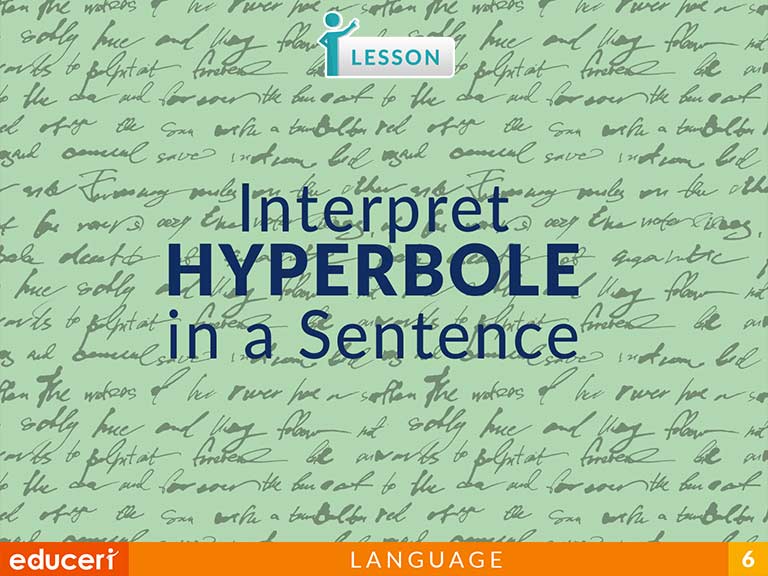
Interpret Hyperbole in a Sentence
This language lesson covers how to identify and interpret hyperbole. The lesson includes research-based strategies and strategic questions that prepare students for assessments. In this lesson, students will develop the skill of looking for an exaggerated phrase in a text that stretches the truth about something, and then interpreting its meaning.
Share This Lesson

Distinguish Between the Connotations of Words with Similar Denotations
This language lesson covers how to distinguish between connotations of words with similar denotations. The lesson includes research-based strategies and strategic questions that prepare students for assessments. In this lesson, students will analyze sentences for context clues that suggest which of three similar words can be used in the sentence based on each word’s denotation and connotation.
Share This Lesson

Punctuate Sentences with Appositives
This writing conventions lesson focuses on identifying appositives. The lesson includes research-based strategies and strategic questions that prepare students for assessments. In this lesson, students read the sentence, looking for noun phrases. Then, they identify if the noun is followed by an appositive, insert a comma to separate the appositive from the rest of the sentence and read it aloud. In addition to the lesson, there are four pages of Independent Practice and review with questions modeled after current adaptive testing items.
Share This Lesson
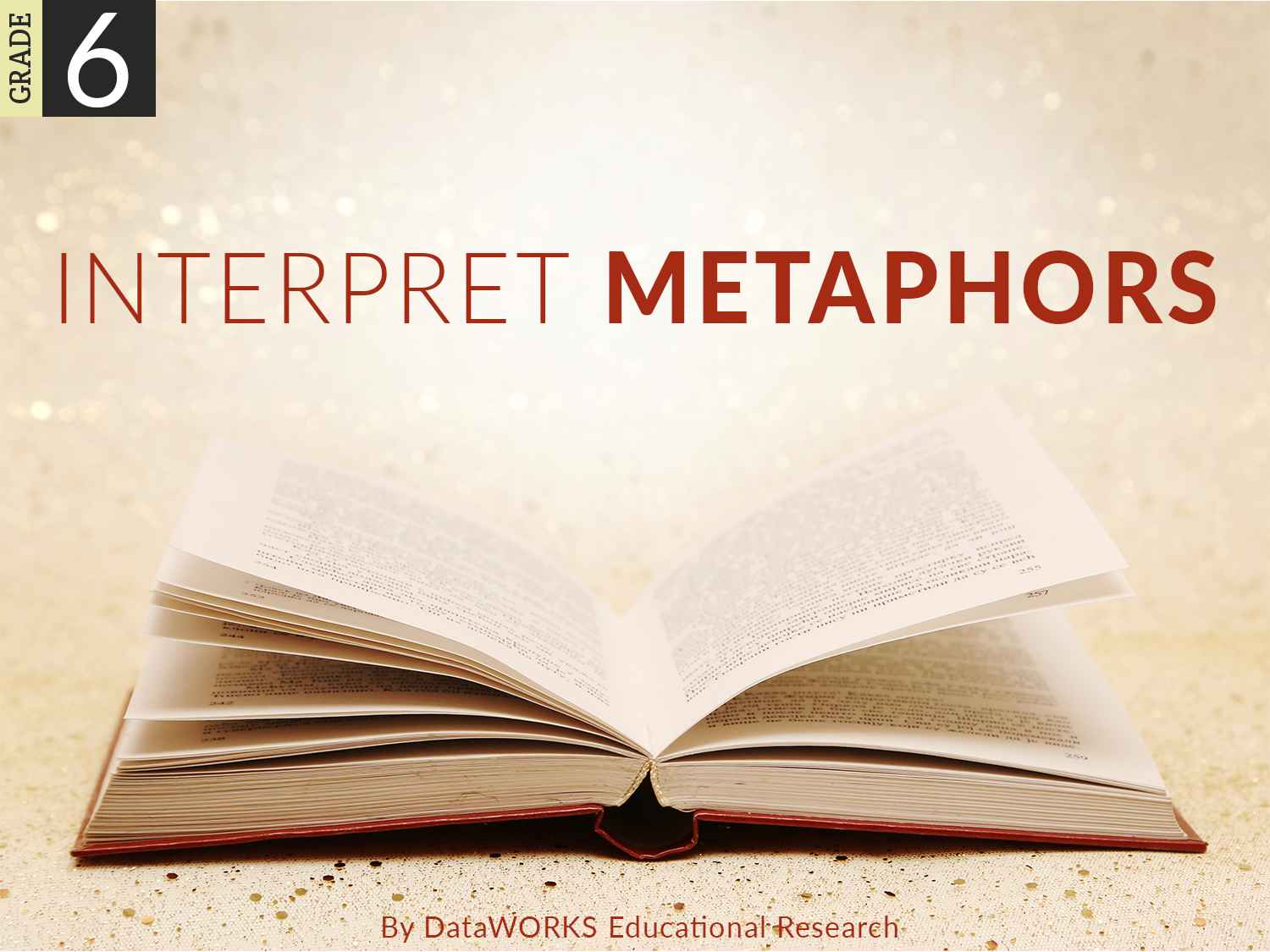
Interpret Metaphors
This reading vocabulary lesson focuses on interpreting metaphors. The lesson includes research-based strategies and strategic questions that prepare students for assessments. In this lesson, students identify metaphors in sentences and determine what qualities the two objects have in common. Then, they interpret the meaning of the metaphor. In addition to the lesson, there are five pages of Independent Practice and review with questions modeled after current adaptive testing items.
Share This Lesson
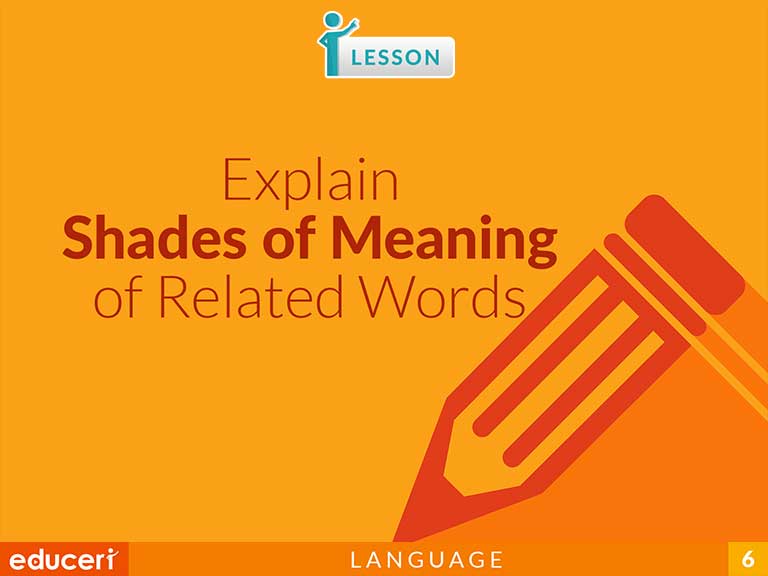
Explain Shades of Meaning of Related Words
This reading vocabulary lesson focuses on interpreting shades of meaning. The lesson includes research-based strategies and strategic questions that prepare students for assessments. In this lesson, students read the definitions of closely related words and the sentences that follow. Then, they use context clues to place the correct word in its proper sentence. Last, students explain their answers. In addition to the lesson, there are eight pages of Independent Practice and review with questions modeled after current adaptive testing items.
Share This Lesson
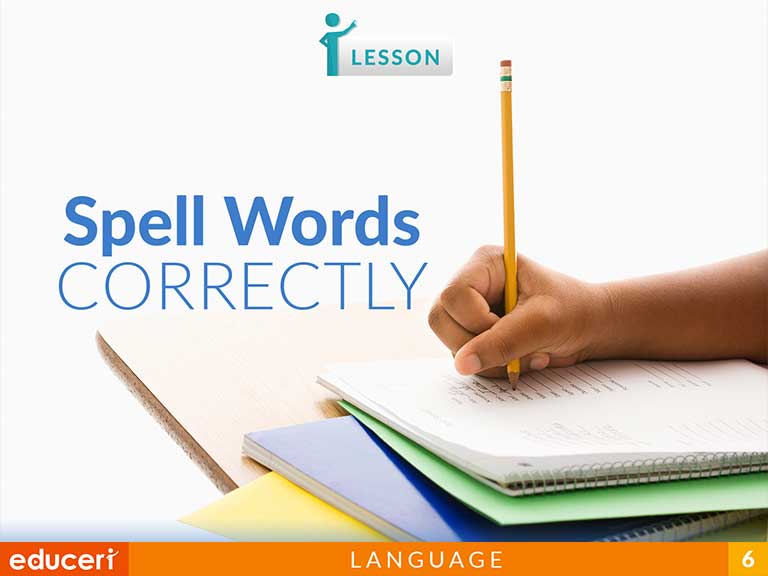
Spell Words Correctly
This writing conventions lesson focuses on spelling words correctly. The lesson includes research-based strategies and strategic questions that prepare students for assessments. In this lesson, students practice spelling words correctly using six different spelling rules about adding suffixes to the end of words. In addition to the lesson, there are 12 pages of Independent Practice and review with questions modeled after current adaptive testing items.
Share This Lesson

Use Effective Subordination to Write a Complex Sentence
This writing conventions lesson focuses on using effective subordination to write a complex sentence. The lesson includes research-based strategies and strategic questions that prepare students for assessments. In this lesson, students identify the relationship between sentences (time, cause and effect, opposition, condition, and place) to determine the correct subordinating conjunction. Then, they combine the sentences by linking them with the subordinating conjunction. In addition to the lesson, there are five pages of Independent Practice and review with questions modeled after current adaptive testing items.
Share This Lesson
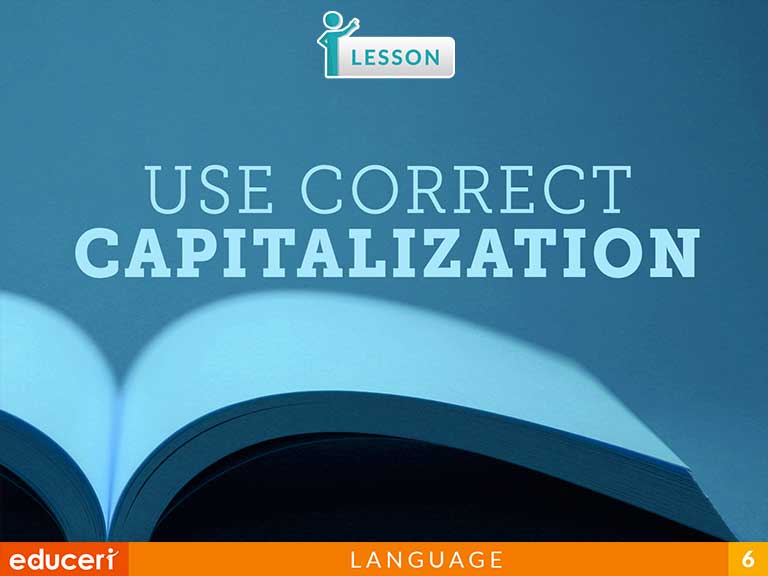
Use Correct Capitalization
This writing conventions lesson focuses on using correct capitalization. The lesson includes research-based strategies and strategic questions that prepare students for assessments. In this lesson, students read a passage, identifying (underlining) all of the words that need to be capitalized based on the chart of capitalization rules. Then, the select the correct way the sentence should be written, using correct capitalization. In addition to the lesson, there are eight pages of Independent Practice and review with questions modeled after current adaptive testing items.

